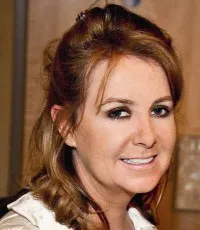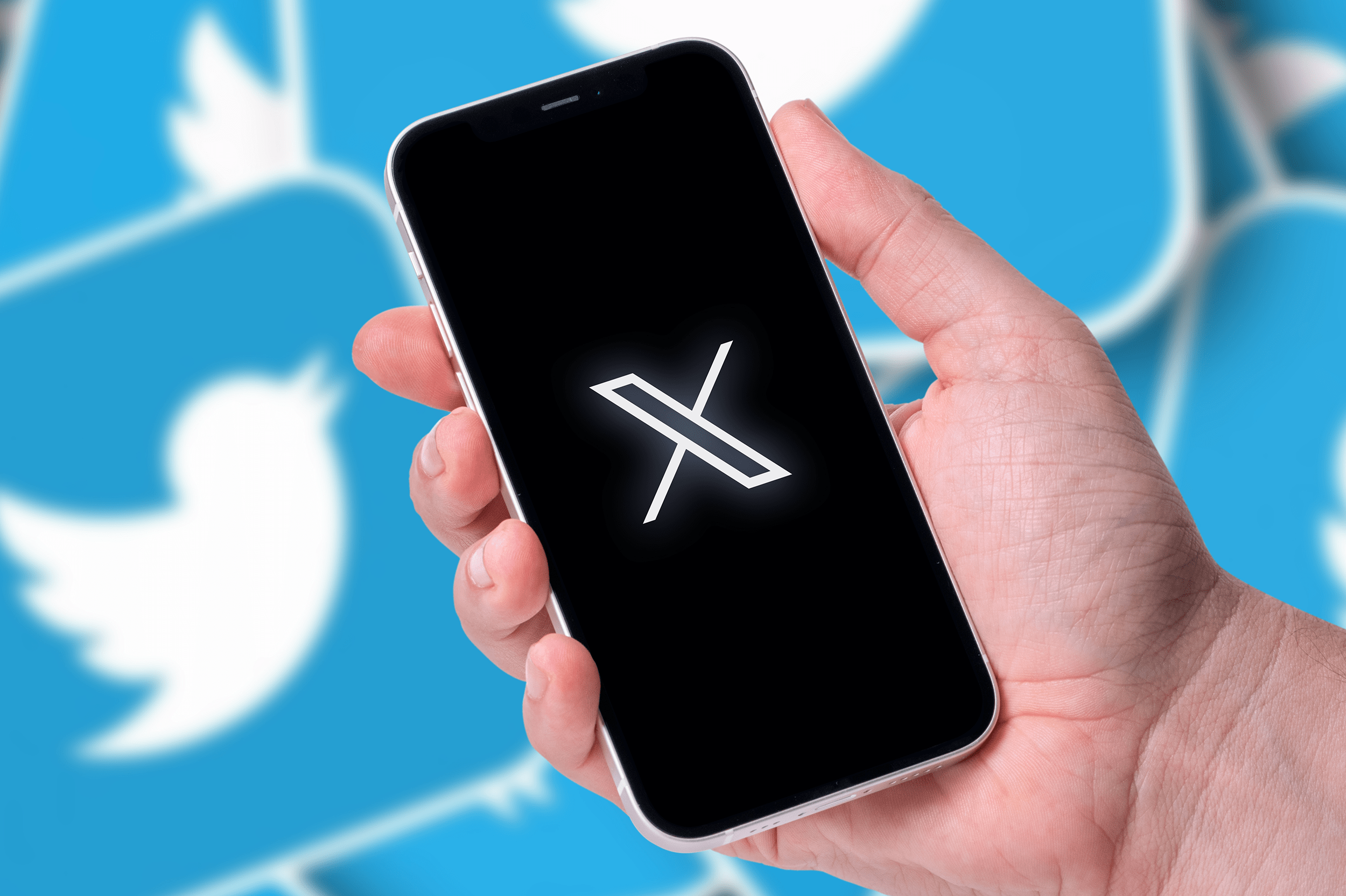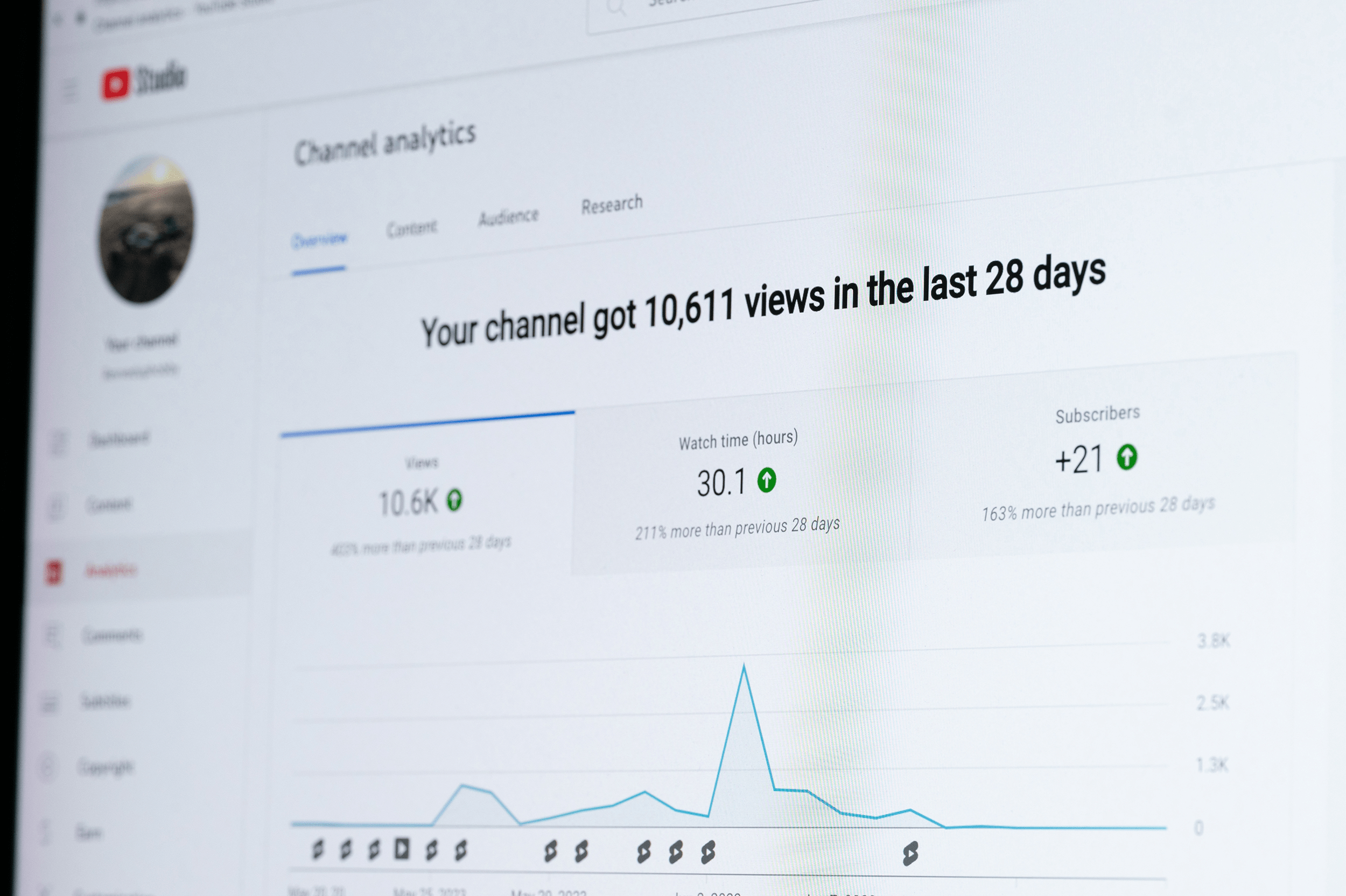There’s a lot to think about when it comes to planning your social media marketing campaigns. From tapping into the latest social media trends, to knowing how Instagram’s demographics align with your target audience, to being on top of the latest Facebook algorithm changes so you can position your content for the best possible reach, there’s so much to keep track of that running an effective social media campaign without a calendar is impossible.
But creating a social media calendar is itself a monumental task. Not only do you need to plan your social media content and promotions across multiple channels – Twitter, Instagram, Pinterest, and more – but you also need to plan for flexibility. Effective social media marketing means staying on top of key social media metrics and readily adapting to your audience’s needs, wants, and demands.
Naturally, there’s plenty of room for error in the social media calendar creation process. To help you avoid the most common mistakes and create the efficient, functional social media calendar you need to run a flawless social media marketing campaign, we reached out to a panel of social media marketing experts and asked them to answer this question:
“What’s the biggest mistake companies make in creating a social media calendar?”
Meet Our Panel of Social Media Pros:
Keep reading to find out what mistakes you could be making in creating a social media calendar (and how to avoid the most common mistakes).
 Charu Babbar
Charu Babbar
Charu is a newbie in the world of entrepreneurship. After a successful stint of ten years in software Marketing, she decided to establish her identity beyond big corporations and designations. She blogs at ErgonomicSpot.
“I think most companies miss provisioning for reuse of content for social media. The usual focus is on recency and frequency of content. However, due to the overload of information in the social media world, not all posts get the same attention, hence some can be rehashed and reused for a certain period of time. This saves effort in creating new content and also helps in maintaining the frequency of posts. However, caution needs to be exercised to find the right balance between the new and reused content.”
 Greg Dorban
Greg Dorban
Greg Dorban progressed from an intern to business owner at a multi-national marketing agency in just over 5 years. He heads up strategy at Ledger Bennett and is an active investor in start-ups, real estate, and emerging technologies.
“I get it, you have commercial pressures and products to sell. Your boss wants to see visible activity promoting the latest release. Every business is the same. However, when creating a social media calendar your internal needs should be secondary to those of your audience. I see it time and time again where priority is given to internal driven messages without thought of the target audience. Even with a customer spin on the pain or benefit of the product, the actual resonance with the audience may be low due to the starting point not being high on the social community priority list.
“The best way to resolve this is through educating the business on what is most effective socially, why this is the case, and the commercial impact on the business. I’ve found the best way of doing this is to split test different messages to show the business what actually works and what doesn’t work. When utilizing performance data and metrics, it becomes far easier to change behaviors based on the facts of what is helping the business more. Another effective way is through social listening, where you can proactively take conversations to the business that they can support, as opposed to the calendar being a one-way process of message pushing.”
 Cristina Maria
Cristina Maria
Cristina Maria is a Marketing Executive for Commusoft, a B2B SaaS company providing job management software for 1,200 field service businesses with over 10,000 individual users between them.
“There are many things people forget when creating a social media calendar but the most jarring one is carelessly recycling content. There’s hardly an easier way to alienate your followers than by posting the same Tweets over a short period of time. Depending on which platform you use, posts have a designated lifespan which is influenced by the number of followers you have. Use this to your advantage and don’t simply clone yesterday’s posts. It’s more difficult to always have new content on your blog, but you can always update the social media share with some new, engaging text. Make the most out of your calendar and space out repetitive content over a longer period of time to ensure that your audience doesn’t get bored.”
 Kraig Martin
Kraig Martin
Kraig Martin is the Commercial Director at Storage Vault, one of Scotland’s largest self-storage companies.
“A common mistake that a lot of businesses make when it comes to scheduling social media content is only ever sharing their own content. It’s a comforting trap to fall into, but this approach is likely to affect the quality of your content calendar in the long-term.
“The result comes across as rather spammy and can be interpreted as a bit of a ‘hard-sell’ approach that can often cost you followers.
“Adding extra sources of content into your content calendar is an easy way to avoid this, creating variety and adding diversity to your output.”
 Nate Masterson
Nate Masterson
Nate Masterson is the CEO of Maple Holistics.
“One of the biggest mistakes that companies make is not surrounding their content around their business goals. Creating content shouldn’t just be a fun, necessary component of your marketing. It
should work alongside your specific goals as a business. Make sure that the content that you upload on social media is in line with your sales cycles and launches so that it’s an aid rather than just a pretty addition. In practice, you should be using your social media calendar as a way to align your social media with the rest of your marketing goals.”
 Darren Lavender
Darren Lavender
Darren Lavender is currently running a popular website called CertaHosting that explores the possibilities of web hosting, hardware, and technology.
“Here are some of the biggest mistakes in creating a social media calendar:
“1. Identifying goals and target audience. Often, people with little experience that attempt to plan a solid social media calendar find themselves overwhelmed with different choices they have to make in order to create successful content.
“Before creating a calendar, many people fail to define and create a list of main activity targets on social networks. They don’t really know what they want to write about, so they come across as mercurial and too general. To correct this, any community manager should be setting goals on an annual basis, which will help them to define their monthly goals.
“2. Making content for the business. People are often too slow in collecting crucial information about any news, updates, and upcoming events that should be made into a spotlight on their calendars. When they report too late or cover something that’s been overdone, they give the impression of amateurs.
“3. Staying up to date and modifying their calendars. It’s a fact things change, and every community manager should be aware of that. Unfortunately, some of them just can’t keep up with the flood of constant change on the market, so they fall behind. My advice would be to keep up to date with industry trends and trends, and especially to keep track of the competition and their online activities.
“Keep track of the statistics. Just because something is written in the calendar doesn’t mean that it has to stay. If there’s a noticeable change in content in your audience – change or delete parts of the plan.”
 Ben Taylor
Ben Taylor
Ben Taylor, a consultant since 2004, is the Founder of HomeWorkingClub.com, an advice portal for aspiring freelancers and small business owners.
“A big mistake I’ve seen repeatedly with social media calendars is a company creating a calendar, but then failing to recognize and plan for the work involved in making the best use of it. Creating the calendar is one small step of the process. If you leave it there, it becomes little more than a place to look at events your company didn’t make the most of! Some occasions need more than acknowledgement on the day. Preparation is key, and it’s as much about the work that goes into creating content in advance as it is about getting things right on the day of each event. If someone isn’t proactively managing the calendar, it’s FAR less useful than it has the potential to be.”
 Keri Lindenmuth
Keri Lindenmuth
Keri Lindenmuth is the marketing manager at KDG. For over 17 years, KDG has been helping businesses improve their processes, their customer experience, and their growth.
“One of the biggest mistakes a business can make when creating a social media calendar is not being social enough. Some businesses get so caught up in sharing their own content and building backlinks that they forget about other aspects of social media, like interacting with others online.
“In addition to sharing their own content, businesses should also be sure to share the content of others in their industry. Become subject matter experts by bringing your followers news, updates, and insights. Is there an interesting article about your industry? Share it. Comment on why it is important, thought-provoking, or perhaps even wrong. Build a profile that your users will trust. Build a profile that your followers will turn to right away when they need the latest information or insights.”
 Tom Jullings
Tom Jullings
Tom Jullings is a social media marketer at onefoursix, a creative web agency.
“A social media calendar is a very useful tool for small businesses and marketing managers to help plan their social media content. However, individuals make a few mistakes that can make the process ineffective.
“Not allocating enough time. Creating a social media content calendar is a time-consuming process. It requires adequate thought and planning. Most small business owners fail to allocate time, where their diaries are clear of other business activities, in order to focus on the strategy and objectives of their social media marketing.
“Not engaging the right stakeholders. While small business owners may be actively engaged in many facets of their business, they may find more value in engaging members of their team to help plan and create social media content. The part-time salesperson may have a better working knowledge of items that are selling well than the business owner does. The business owner can use that insight to power their social media marketing.
“Not using the right tools. We’ve seen business owners trying to plan social content and giving up because it’s ‘too difficult.’ The process of planning social media content can be made easier if business owners use tools that can help them do the job properly. My top tips are to use Google Sheets to create a calendar plan. Use content buckets to separate facets of your business. That will make it easier for you to focus. Then plug your calendar with nuggets of information from your content buckets. Use a tool like Hootsuite or MeetEdgar to schedule your content. That way you can set your content calendar and it will take the process of posting content on to your platforms out of your busy hands.
“Not measuring the results. Social platforms have in-built analytics tools that can help business owners to measure the impact/outcome of their social content. Most business owners don’t take the time to review the content that gained traction, so that they can hone their content plans and focus on the things that work. Usually, content that helps to inspire and educate people will gain better traction. So, try making 80% of your content informative, and only 20% of your content sales-focused. By analyzing your social profiles, you’ll learn more about the power of your content and more about your customers.
“Not spending time engaging with people. The biggest mistake business owners can make is relying solely on their pre-scheduled social media content to deliver sales leads. ‘Set and forget’ is not the answer. Business owners should take the time to engage in meaningful conversations and contribute to the debate in order to show that their business is real.”
 Kim Randall
Kim Randall
Kim Randall is the Owner and Social Media & Branding Professional at KiMedia Strategies.
“In my experience, there are quite a few biggest mistakes companies can make. The first would be not realizing the importance or significance of needing a social media calendar. The next mistake companies can make is creating their social media calendar like they would a traditional marketing calendar, 3-6 months in advance, not taking into consideration that trends change, algorithms constantly change as well. If you create your social media calendar that far in advance it’s important for companies to revisit the calendar every week for the upcoming weeks. Social media is constantly changing. You either evolve your social media calendar accordingly or get stuck treading water.”
 Matthew Ross
Matthew Ross
Matthew Ross is the Co-owner and COO of The Slumber Yard, a leading sleep and mattress reviews website dedicated to helping consumers sleep better.
“One of the biggest mistakes companies make in regards to social media calendars is forgetting to take into account special days throughout the year that often go overlooked. For example, days like super bowl Sunday, the day after elections and the day after the state of the union address all hog consumer attention. A lot of times, these days go forgotten in the calendar because they’re not technically federal holidays. Obviously, with all the hype and media attention surrounding these days and events, they’re not the best times for social media marketing campaigns. Companies need to take these times into account when creating plans for the year.”
 Tony Mastri
Tony Mastri
Tony Mastri is a marketing specialist at MARION Marketing, an full-service marketing agency in Texas.
“Not scheduling social posts based on intent is the biggest mistake companies can make. You’ll frequently see companies rotating through types of multimedia, their own content vs. curated content, etc. What you rarely see is companies creating a social media calendar that maps post intent to their own internal goals.
“For example, many businesses use the 5-3-2 rule for social media, where every 10 posts include five curated posts, three promotional posts, and two fun posts that humanize their brand. The missing layer is that the three posts about the business should target different stages of the buyer’s journey. For instance, maybe the first post shares a top of funnel educational piece of content, the second shares a comparison post about your services vs. a competitor’s, and the third shares a piece of content about the benefits and pricing of your product or service.
“Combining the 5-3-2 rule with lifecycle segmentation is the best way to avoid the mistake of ignoring post intent.”
 Ashley Mason
Ashley Mason
Ashley Mason is a marketing consultant and the founder of Dash of Social. She works with service-based businesses to help them create and execute marketing strategies that build an online presence and increase their leads.
“One thing I’ve noticed is that many companies tend to be OVERLY promotional in their posts – which can ruin trust and turn the consumers off from purchasing from that company. Instead, I recommend focusing on what I call The 1/3 Social Media Rule – meaning that 1/3 of your content should include content sharing from other credible sources, such as articles, freebies, and videos; 1/3 of your content should encourage engagement, such as posting quotes, asking questions, and sharing tips; and 1/3 of your content should be promotional, such as letting your audience know about your offerings. A mix of these three will bring a fully balanced calendar that achieves all of your goals.”
 Dew Smith
Dew Smith
Dew is the Content Strategist for Brand Communications at 7shifts, an employee scheduling and labor management platform for restaurants around the world. When she isn’t cultivating the 7shifts social garden, Dew can be found creating unfinished paintings, baking without a recipe, and bingeing the latest sci-fi & horror shows.
“Here are my top mistakes and how to avoid them:
“1. Your social media content lacks variety. Each post should have a goal of what it’s trying to achieve. Is it likes, comments, follows, clicks? You can use the metric to categorize the posts, and you should be posting different metric-focused posts every few days. A photo of your team for likes, a question to the audience for engagement, a new blog for clicks, etc. You can use these metrics to plan out your cadence of posts and make sure that the action you want your audience to be taking is varied through the week.
“2. You rely solely on your social media calendar. A calendar is meant to keep your feeds fresh and to promote things your company is doing — whether it be project sharing, internal news, promotions, blogs, or otherwise. Your calendar should be supplementary to your other social media activity. You need to be engaging and sharing content on-the-fly as much as you are sharing scheduled content. Your audience can tell if they’re just getting weekly updates from a social scheduling platform, and it doesn’t seem authentic. You must have an actual social presence where you engage with others, reshare relevant content, and post stories/photos from around the office as it happens.
“3. You only schedule your content. Social media platforms are for communication, not promotion. By only scheduling content that your company creates, you’re not getting the most use out of the platform and you’re not effectively building trust with your audience. Share posts and news from around the community, reshare client/customer content, and find relevant articles around the web to share with your audience — something relevant to your business.
“4. You’re trying to reinvent the wheel with every post. This is a big one. Many businesses think they have to create brand new content for social media, and not only is this not the case, but it’s also not effective or scalable. Here’s my advice: you have everything you need for social already happening at your company, you just have to capture it. Share updates from your projects, reshare older blog articles and webinars, do weekly staff highlights of your team members, share a positive review you received on Google — the possibilities are endless.”
 Kenzi Wood
Kenzi Wood
Kenzi Wood is an expert marketing writer and entrepreneur. She loves everything content marketing and cats.
“A social media calendar does two things. First, it tells the brand what to post, and when. But second, the social calendar should be the execution of your marketing strategy. And that’s what most companies fumble. They don’t align their social posts with an overarching goal. This makes it impossible to measure the impact of your social efforts. That results in potentially wasted time, budget resources, and less-relevant posts.”
 Ketan Pande
Ketan Pande
Ketan Pande is an engineer and founder at GoodVitae with a knack for learning new methods of increasing social media followers. Through his platform, he is on a mission to empower people who dare to dream.
“Not doing A/B testing. Many companies directly jump to the stage of planning their social media
calendar. Before making a social media calendar, it’s important to understand the behavior of the customers through A/B testing. A company must first search for critical parameters like peak timing of engagement, post types that are most appreciated (e.g., image, direct link), a critical number of posts that is tolerated by audience, etc. After analyzing and finding the sweet spot through A/B testing, the social media calendar can be created. This small but crucial step can help in planning a calendar which is more customer- and social media follower-friendly.”
 Frances Geoghegan
Frances Geoghegan
Frances Geoghegan is the Managing Director at Healing Holidays.
“Initially setting unrealistically high KPIs and targets on a social media calendar is the first mistake to make, and is actually more common from businesses than you think. Remember, social media is fluid; it’s not always predictable because of external factors. For instance, each platform’s specific algorithm can impact on success, as well as other contributors like what is trending at a particular time, and how that can benefit your company’s social media success.
“Obviously, be ambitious with your tasks on your social media calendar, but don’t set unrealistic goals; you’ll only be met with disappointing results and what will then feel like failure, when in fact you have still succeeded.
“Not updating your social media content once it has been created is also a big mistake to make; it means that some of what you have planned may no longer be applicable or relevant. Plus, if you fail to update your calendar, it will be rendered as useless, when in fact it would still be useful if it had been updated appropriately in the first place, and within enough time.”
 Andrew Clark
Andrew Clark
Andrew Clark is a Marketing Strategist for Duckpin.
“Crafting a monthly social media calendar can appear daunting, especially if your company has been slacking on its social media strategy and planning. Without some type of brand and content guidelines, a company runs the risk of taking a ‘shoot from the hip’ approach, which may drive away followers and engagement. One way to prevent this from happening and making sure your organic social media content delivers is to develop your company’s content pillars and thereafter, monthly content series. Content pillars are essentially themes that you wish to focus on. Examples would be products, customer care/FAQs, special promotions, etc you want to highlight. Once you’ve established what you want to talk about, have fun with developing the look and feel of these posts – the sky is the limit! In my experience working across different industries and clients, content series manifest in a variety of ways. One of my favorites as of late has been creating a monthly mailbag-style blog post for an industrial adhesive client called Glue Talk.”
 Taylor Mack
Taylor Mack
Taylor Mack is a Social Media Marketing Strategist at Small Biz Refined and Owner of SilverFire Books.
“The biggest mistake companies make with a social media calendar is forgetting to incorporate Instagram stories into their plan. Vertical video is a huge marketing trend in 2019, and its popularity only continues to rise. Instagram stories not only allow you to showcase your brand’s personality, but they also encourage more engagement from your followers. Plan for multiple behind-the-scenes videos. And be sure to use the questions and polls features for market research and making personal connections with your audience.”
 Andrew Barrett
Andrew Barrett
Andrew Barrett has over 10 years’ experience in content development and production. At present, he is the director of content at the fastest growing senior living marketplace in the U.S. At Seniorly, he is responsible for all content creation and distribution across web, social, and email.
“In my over ten years of managing social media, including for superstar Tom Cruise, I have seen one consistent mistake being made when creating a social media calendar, whether I have made it, or it was made by those managing me: not listening to the audience.
“I helped launch a streaming network that specialized in fan culture. Everyone involved in the development of this product was smart, enthusiastic, and excited to be a first-to-market product for this rabid audience. Subscribers paid a monthly fee to watch classic movies and TV shows, as well as a slate of original programming. We attended fan events around the country and quickly learned that each kind of fan (Sci-Fi, Horror, Fantasy, Cult Classic, Star Wars vs. Star Trek) did not see fandom in the same way. So, our original social calendaring approach of one-size-fits-all was clearly not listening to our audience. After we created user personas, the first thing we did was to devise both monthly social events geared towards a specific fan segment/persona.
“The second thing was to take our tent-pole calendar (Halloween, Thanksgiving, Holidays, Valentines Day, etc.) and create social campaigns specific to each fan segment/persona. For example, for the holidays, we created advent calendars that were customized to each fan group, instead of just having one event calendar.
“At the same time, we were very fortunate that Facebook Live just launched for brands and we had production studios that could maximize their streaming service. Within one week we had devised daily Facebook Live broadcasts that specifically addressed individual fan segments. Monday would be for fantasy fans. Tuesday was trivia day. Wednesday was horror, and so on. Plus, by using Facebook Live we were being granted the coveted organic social reach Facebook had been granting to anyone using Live.
“Using a copious amount of data, we saw our calendaring approach prove we achieved significant brand lift and loyalty. In fact, because of the data analysis we were able to adjust our strategy fairly quickly by focusing on the segments that were providing the greatest lift and those that we saw as potentially holding us back. Honestly, the juggling of the different fan groups was hard. Really hard. But calendaring based on listening was essential for growing the paid subscribers to this new streaming service.”
 Kristin Dyak
Kristin Dyak
Kristin Dyak is the Digital Media Director at The Cyphers Den.
“Mistake #1: Not looking ahead. A significant benefit of a social media editorial calendar is to see an overview of events and announcements that should be incorporated into social media content over a period of time, so it’s essential to look ahead.
“How to make sure you do: Plan to collaborate with those who have insight into what events and announcements are expected in the coming months. This initial collaboration helps to include information that might not be top-of-mind for those creating the calendar but should be mentioned on social media channels. First, create an overview of the next quarter. Be sure to include both confirmed and tentative content that should be included during those months. Then, a couple weeks before the start of the next month, develop a more granular monthly calendar that includes the known content and leaves room for posts that may occur closer to the date.
“Mistake #2: Not allowing flex days for real time content. Although planning out the calendar in advance is a great starting point, the nature of social media content tends to be more real-time. An overly produced editorial calendar doesn’t leave room for timely posts.
“How to make sure you do: Leave flex days in your calendar that allows for evergreen content to be moved when a real-time post is necessary. There’s a bit of guessing that comes with knowing when to place these flex days, but as the ongoing calendars are created, it will become easier to know how many days and which days are best for this flexible space.
“Mistake #3: Not balancing your content. Promotion of your brand is the first thing that comes to mind when thinking about marketing. Social media lends itself to a slightly different strategy due to the conversational nature of the each platform. When developing your social media content calendar, it’s important to have a balance of content that includes self-promotion, industry integration, and highlighting a community presence.
“How to make sure you do: Indicate the content category that each post falls into on the monthly calendar. We recommend color-coding the calendar to be able to see a visual overview that shows whether there’s a proper balance among posts on all platforms.”
 Laura Troyani
Laura Troyani
Laura Troyani is the founder and principal of PlanBeyond, a marketing strategy firm for start-ups and recently-acquired businesses. With experience overseeing customer research, go-to-market planning, and marketing operations, Laura advocates for getting the strategic fundamentals down pat to help any organization nail their growth goals.
“Social media is an incredibly ephemeral marketing channel. What you post today is quickly forgotten. As a result, there’s no need to scratch your head trying to come up with brilliant ideas to post each and every day, multiple times a day. Instead, leverage fantastic evergreen content like videos, long-form articles, and blog posts, and use them as anchor content for your social media posts. As you’re building out your social media calendar, leverage that same content but slightly rejigger the post copy and images. You’ll find that you’ll be able to fill out your calendar for months to come by repurposing this great content. Your team will save a ton of time on social media post creation, and you’ll ensure that key company or brand messaging is regularly reinforced.”
 Josh Rubin
Josh Rubin
As owner and CEO of Post Modern Marketing, Josh Rubin has been guiding strategies for businesses of all sizes with a focus on web design, SEO, social media, and more.
“Don’t automate everything! We live in a world of automation, where we want to save time and create
processes for every aspect of our workflow. The problem with this, though, is we often lose sight of what engages our customers and what’s effective in support for our messaging – automated posts are often self-promotional and bland in regards to engagement. So, we find the most success with clients who are flexible with their social media calendars and allow slots to be filled organically. By far, the most shared, liked, and engaged posts are always the spur-of-the-moment, ‘look at this cool thing,’ or, ‘here’s our happy customer just now’ types – and don’t fake it, as it’s almost always noticeable and disingenuous. So, with your calendar, map out the promotional items and the branded posts, but leave room and put effort towards spontaneous posting.”
 Joe Goldstein
Joe Goldstein
Joe Goldstein is the Director of SEO & Operations at Contractor Calls.
“Many companies treat social media as a box to check off which is why they miss out on opportunities for newsjacking and hashtag jacking. If your resources are limited, use a post scheduler like Buffer to put your social media calendar on autopilot so you can spend that time interacting with other accounts, building on relevant hashtags, and jacking news when appropriate, because those are the kinds of posts that get real engagement.”
 Jessica Dais
Jessica Dais
Jessica Dais is the Content Manager at TakeLessons, the largest marketplace for private tutors and online classes, in any subject from piano to yoga. Her favorite month-long observance is January, which is International Creativity Month.
“The biggest mistake companies make when planning out their social calendars is not being mindful of seasonal trends and month-long observances. For example, March is Women’s History Month. You should always keep your calendar flexible as new trending topics arise just about every day, and you never know when one of them will involve your industry or niche!”
 Audrey Strasenburgh
Audrey Strasenburgh
Audrey Strasenburgh is a SEO Strategist at LogoMix.
“One of the biggest mistakes companies can make in creating a social media calendar is not including enough variety in their posting. I often ask clients what types of posts they are making, and to my dismay most of them reply with, ‘Well, we post our weekly blog.’ Unfortunately, posting your weekly blog just doesn’t cut it anymore –especially since social media platforms are changing their algorithms to provide their users with more engaging content.
“Whether you post once or twice a day, every other day, or even once a week, the only way you will engage your audience is with different forms of content. When creating your social media calendar, make sure to include these types of posts:
- Posts promoting your products or services. This can be a picture of your most popular product, or a picture of an employee providing a service for a customer (such as an auto tech replacing a tire).
- Posts about a local community event that’s relevant to your business, or a post about a national holiday, or work milestone. This is especially important for small businesses as it helps them connect to their community.
- Blog posts. Yes, it is still fine to promote your new content. Don’t hesitate to re-post old blog posts either if they’re relevant – just make
sure you look over the copy and make a few updates. - Sharing industry-relevant news articles. This is huge! Many businesses feel uncomfortable sharing industry-related news articles, while in fact, sharing these articles will show customers that you are staying on top of industry trends. You want to tell others that you are the leading expert in your line of business.
- Posts of your employees, your shop or storefront, or owners. Customers want to see that real humans work at a business. It’s all about
transparency and honesty these days – and these types of posts help bridge the gap between a simple facade and a caring, helpful, trustworthy business.
“When creating your social media calendar, always make sure that each post includes an image or video, and a link.”
 John A. Vagueiro
John A. Vagueiro
John A. Vagueiro, 27, is a high-energy tech entrepreneur best known for his design and marketing firm, Adapting Social. AS serves clients ranging from small businesses to Fortune 500 companies across the US and in 5 other countries through creative design & innovative digital marketing.
“In my opinion, one of the biggest mistakes a company can make in creating a social media calendar is being too rigid in abiding strictly by that set schedule and not allowing any room for spontaneity or change. We work in a digital landscape that is always growing and changing. Knowing that, it would make sense that the content we share within that digital landscape would also change and evolve as time went on and new trends emerged. It’s important to interject topical content into your strategy, utilizing new hashtags and trends as they arise and making sure, of course, that you are utilizing them in the correct capacity and context.
“At its core, social media is really just another way of interacting and engaging with your audience- people want to see new and exciting things in their feed; they don’t want to be fed the same content over and over again. That’s especially important when we acknowledge the fact that we are not just competing with other companies in our audience’s feeds, but their family and friends who they follow as well. There is nothing inherently wrong with utilizing a social media calendar; it’s a great tool that serves the purpose of providing consistency and structure. The important thing to remember is just to keep things fresh and not rely so heavily on a content calendar that it makes things predictable or stale, because that’s how you lose followers and engagement!”
 Gemma Roberts
Gemma Roberts
Gemma is an accountant and business blogger. She shares tips on starting a business for people building an income flexibly around their family on her blog, The Work Life Blend.
“When it comes to small businesses, the biggest mistake you can make with your social media calendar is trying to be everywhere at once. It becomes overwhelming! They spread themselves too thin and try to cover all social media channels without taking a step back to think about what they actually want to achieve. It’s key to devise a killer social media strategy before you start. Consider where your potential customers live online. That’s where you want to be. Where will you see the greatest return? To start with choose one or two social media channels and really master those. Once you get to grips with the fundamentals of building an engaged and loyal following there, then you can roll out your brand of social media genius to the others.”
 Jake McKenzie
Jake McKenzie
Jake McKenzie is the Content Manager at Auto Accessories Garage, a fast-growing, family-owned online retailer of automotive parts and accessories. He manages all written content for the website including research guides, product descriptions, and other informative articles.
“The biggest mistake brands make when building a social media calendar is focusing too heavily on the posting rather than the interacting. After all, social media is social by its very nature, so it’s important not to think of your branded accounts as megaphones making announcements to the world. Just as you schedule posts, you should schedule time to read and respond to user interactions.”
 Lisa Chu
Lisa Chu
Lisa Chu is the CEO of Black n Bianco, a brand dedicated to crafting memories the whole family will treasure. They specialize in making kids look and feel their best.
“One of the biggest mistakes companies make when creating a social media calendar is not having back up content in case the content you used are not generating enough engagement. Creating a mixture of content will give companies the ability to swap and change on the fly if the posted content is not working.
“Always conduct an audit on a monthly or quarterly basis to see which types of content evoke the most engagement. This will make your
social media calendar more efficient when you can predict what types of content will generate the most hype on certain dates. Another mistake business make in creating social media calendars is not having an event on certain dates. There’s nothing wrong with a simple post celebrating the holiday, but you should also strive to relate to it to generate more followers. Businesses have been doing holiday season sales for decades, because they know customers are looking to shop.
“Apply that same mindset but in the social media realm. You want your customers to be looking at your company’s social media page to see if there are any special events or giveaways. It’s about building a relationship with your customers and giving them something to look forward to. In order for the event to resonate with your target audience, it must be planned way in advance using a social media calendar. Your social media calendar is your road map for the year, but like any road, there will be bumps and dead ends. Being prepared for tough terrain will provide your company the highest chance at success.”
You put a lot of effort into planning and creating phenomenal content for your social media campaigns, but growing your audience can be easy with ShareThis’ social media follow buttons. Install the Instagram follow button to start growing your Instagram audience today – it’s so simple to use, you can install it in just minutes!




